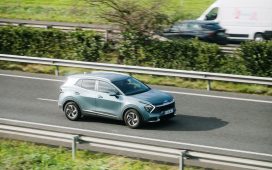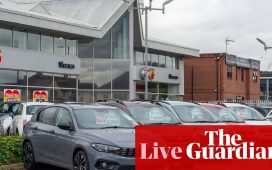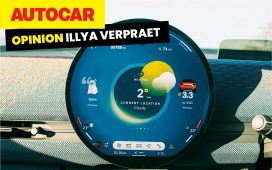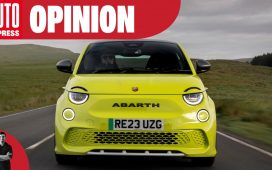As Ireland falls into line with EU and global metrics for ESG, we enter a new era for cleaner, greener transport. Much is being done to drive this crucial transition, with positive progress being reported by both the National Transport Authority (NTA) and the Department of Transport.
The Pathfinder Programme forms a key part of the implementation of the National Sustainable Mobility Policy. This sets out the government’s plan to meet Ireland’s requirement to achieve a 50% reduction in greenhouse gas emissions in the transport sector by 2030.
The NTA has already commenced the transition to a low and zero-emission urban public bus fleet.
In January of this year, it invested €10m, under the Pathfinder Programme, in Ireland’s first all-electric town bus service in Athlone. The project included 11 new buses, a reconfiguration of the bus depot, the installation of chargers and an electricity substation to supply power to the fleet.
NTA communication officer, Michael Sinnott, says the new fleet will reduce CO2 emissions by 400,000kg annually and deliver a quieter, cleaner bus service for the town and for local TFI customers.

“The NTA is also piloting and driver testing new double deck battery-electric buses in Dublin and charging infrastructure installed in three bus depots in Dublin and Limerick,” he says.
It is anticipated that electric buses will begin to enter passenger services in Dublin City towards the end of this year, and in Limerick City early next year.
Advising that further projects to convert more city and town bus services to zero-emission operation are under development across the country, Sinnott says the intention is that the entire urban public fleet will be zero-emission by 2035.
Last year, 165 battery electric single and double desk buses were ordered by the NTA for use on urban services. The NTA has also ordered an additional 90 new DART carriages, bringing to 185, the number that is now in production for delivery from next year.
Discussing the DART+ Programme, Sinnott says it will revolutionise travel in the Greater Dublin Area.
“It will see the DART network grow from its current 50 km in length to over 150 km,” he says. “This will promote multi-modal transit and active transport, boost regional connectivity, and make public transport the preferred option for more people.”
The DART+ Programme will, he says, deliver frequent, modern, electrified services within the Greater Dublin Area (GDA) and improve connectivity to regional towns and cities.
Our commercial port network is another area which is being made cleaner and greener. It is a busy network, with 90% of all goods traded by Ireland entering and exiting that way.
Acknowledging ‘the responsibility the port network bears towards the environment,’ a spokesperson for the Department of Transport adds: “Our ports also have an important role to play as key enablers in helping Ireland meet its national and international climate targets and in our transition to a more circular economy.
“Ports are facing unprecedented environmental, technological, geopolitical and demographic challenges,” she says. “To equip them for these challenges and the new opportunities ahead, a review of Ireland’s National Ports Policy is about to commence. In this review there will be strong focus on the policy actions required to enable our ports to play their part in the decarbonisation of our supply chains and economy.
“At European level, the ‘Fit for 55 package’ will aim to ensure that we meet the EU’s target of reducing net greenhouse gas emissions by at least 55% by 2030,” she says: “Several files in this package, such as the FuelEU Maritime Regulation, the revision of the EU Emissions Trading System (EU ETS) and the Alternative Fuels Infrastructure Regulation (AFIR) will address emissions from maritime transport and will help provide the regulatory certainty to put the shipping industry on a pathway towards the phasing out of GHG emissions. These new laws will be implemented and enforced by Ireland over the coming years.
“In addition, Ireland is a signatory of the Clydebank Declaration 2021 which supports the establishment of green shipping corridors, which are decarbonised maritime routes between two or more ports. Ireland has also signed the Declaration on Zero Emission Shipping by 2050.”

Aviation emissions are something about which all of us are becoming increasingly aware. So it’s good to know that the Programme for Government commits Ireland to supporting EU and international action to reduce those, in line with the aims of the Paris Agreement and the UN Framework Convention on Climate Change.
On this topic, the Department of Transport spokesperson says: “Given the international nature of the aviation sector, it is essential that we pursue such a partnership approach if we are to meet our collective climate goals. Ireland pursues these reductions with particular emphasis on the promotion of policies and actions derived from the internationally endorsed International Civil Aviation Organisation’s (ICAO) with emphasis on four key pillars.
“These include technological advances in aircraft design that will lead to reduced emissions through more fuel-efficient aircraft, and future aircraft powered by alternative energy sources such as hydrogen and electricity will also contribute in the longer term. Market-based measures, such as the EU’s Emissions Trading System and ICAO’s Carbon Offsetting and Reduction Scheme in International Aviation (CORSIA) which incentivise airlines to reduce their emissions. Improved operational measures such as air traffic management that will lead to reduced fuel burn and time spent in the air, thus reducing emissions. And finally, the development and deployment of Sustainable Aviation Fuel (SAF).”
The spokesperson says that while all four pillars within the basket of measures are important in reducing carbon emissions, it is widely recognised that SAFs will play the greatest role in the short to medium term in reaching climate goals.
“This is because SAF has the potential to reduce greenhouse gas (GHG) emissions by up to 80% compared to fossil jet fuel over its life cycle,” she says. “It is also the case that as a drop in fuel it can be used in existing aircraft and is compatible with existing fuelling infrastructure.
There’s much being done and more to do. So it’s good to know the Department of Transport is also in the process of establishing a working group on SAF which will bring together stakeholders with responsibility for and interest in policy development and implementation in relation to SAF.
We only have to stroll down a busy street and see freight trucks trundling along, to contemplate their carbon footprint. Sharing what’s being done in this regard, the Department of Transport spokesperson says: “In November 2022 Ireland joined like-minded states in signing a Memorandum of Understanding (MOU) on Zero-Emission Medium and Heavy-duty vehicles.
“This MOU sets out a non-binding global commitment to achieve a minimum of 30 percent of all new Medium and Heavy-Duty Vehicles (including buses and trucks) sales to be zero-emission by 2030 and 100 percent by 2040.”

In December 2022, the Government published Ireland’s Road Haulage Strategy 2022–2031. The Strategy highlights the importance of the haulage and road freight sector and addresses seven thematic areas of particular relevance for heavy goods vehicle (HGV) transport, including sustainability and decarbonisation.
On this topic, the Department of Transport spokesperson says: “Given that the Irish HGV sector is almost exclusively fuelled by diesel currently, decarbonisation will be a significant challenge for the sector over the medium term to 2030 and beyond. The strategy provides a roadmap on how the sector can decarbonise to meet the targets set out in the Climate Action Plan.”
Sharing that the Department of Transport is hearing positive news and signalling from vehicle manufacturers regarding the line of sight for delivery of zero-emission trucks, she adds that this must be encouraged and supported to ensure that climate objectives are met over the next decade.
According to the Department, there is no shortage of endeavours to hasten the transition to green. “As we go forward,” she says, “eco-driver training — the training of hauliers to drive vehicles in a safer and more eco-friendly manner — will be important in promoting decarbonisation in the road freight sector.
“Further transitional measures which will be critical to the decarbonisation of the sector are the promotion of digital and operational efficiencies such as load-sharing and a study to establish the potential for logistics consolidation hubs.”










